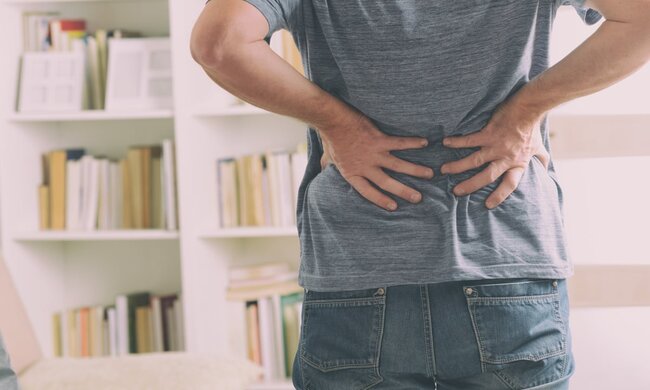Today, the average life span is longer than ever before. Longer lives present various benefits to individuals. Grandparents now spend more time with their grandchildren and gain additional experiences. Extended lifespans also present new medical issues. Injuries experienced in your youth may reappear later in life as chronic pain. Unfortunately, many individuals turn to opioid use for relief, fueling the epidemic.
Natural treatment methods provide non-invasive relief for the 50 million U.S. adults experiencing chronic pain. Low-impact exercise, thermotherapy, and brace support help individuals experience normal mobility and limited discomfort.
Why Chronic Pain Occurs
Pain is the brain’s reaction to specific nerve cell receptor messages. When the body experiences injury, illness, or other complications, receptor cells send a signal through a nerve pathway. The spinal cord collects the message and carries it to the brain.
When pain persists for three or more months, it is chronic. Medications, like opioids, block the message from entering the brain. Natural pain treatment limits the physical issue rather than the brain’s response.
Non-invasive pain aid also generates less waste, making it a sustainable alternative to medication. Conventional consumers generate 1,600 pounds of garbage annually. Natural healing processes may significantly reduce your waste output by limiting pharmaceutical emissions and surface pollution.
Yoga
Individuals with arthritis, migraines, fibromyalgia, back discomfort, and other forms of chronic pain benefit from yoga. One study found 313 people with chronic back pain experienced increased mobility with weekly yoga classes. The benefits exceeded standard medication care.
The body’s response to chronic pain follows a general pattern. One’s breathing becomes limited, occurring in the chest rather than reaching the lung’s base. Sustained muscle tension also occurs, causing repetitive static muscle loads and psychological distress.
Yoga combats chronic pain using asana and pranayama – movement and breathwork. Together, the practice initiates a relaxation response in the neuroendocrine system. The body responds by decreasing the metabolism, quieting the breath, stabilizing blood pressure, reducing muscle tension, reducing the heart rate, and slowing brain activity.

Heat Therapy
Heat therapy, or thermotherapy, effectively treats chronic pain and injuries. It stimulates blood flow, soothes stiff joints and muscles, and relaxes spasms. The natural remedy approaches a specific pain issue deriving from lactic acid buildup.
Thermotherapy targets lactic acid by removing bodily toxins and restoring blood flow. It also calms the nervous system and the mind. Much of the discomfort associated with chronic pain comes from mental stress.
Systemic heat therapy reduces both issues, taking a whole-body approach. It involves hot baths, steaming, saunas, and hot showers, raising the body’s temperature. Local thermotherapy uses heating pads, warm water bottles, heat wraps, and damp clothes to target pain.
Brace Support
One of the most effective non-invasive pain remedies is brace support. Professionals design braces to protect vulnerable regions of the body. During general activity, they restrict one’s range of motion, providing stability and support.
Their functionality limits overuse and further damage to the body. Braces have a longstanding history of medical uses. They are effective and natural, reducing opioid use and waste generation.
Even veterinarians prescribe braces for overweight and injured dogs. Heavier dogs produce leptin, causing osteoarthritis and other degenerative joint diseases. Braces can limit an animal’s chronic joint pain while supporting its mobility.

Exercise
When individuals experience chronic pain, limiting exercise is their first response. Specific activities may reduce pain and increase mobility. Strengthening and cardiovascular workouts limit discomfort and maximize enjoyment.
Squats, wall push-ups, and biceps curls build one’s strength without causing further damage. Remember to check in with yourself when exercising, limiting any activity causing pain. Walking, biking, and swimming also benefit individuals experiencing chronic discomfort.
Cardiovascular exercise contains various health benefits. Rather than running on the treadmill, use an elliptical trainer to lower impact. Maintaining fitness can help individuals experiencing chronic pain engage in general movement. If you still experience pain when exercising, you may contact a trainer, accessing a workout routine suitable to your needs.
No One-Size-Fits-All
Natural chronic pain treatment methods have different effects on everyone. It may help to combine various techniques, finding a balance that works for you. Non-invasive pain therapy presents minimal risks and effectively limits medicine reliance.
Author Bio
Jane is an environmental writer and the founder and editor-in-chief of Environment.co where she covers sustainability and eco-friendly living.


































